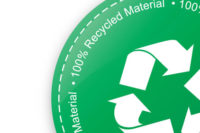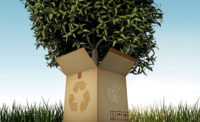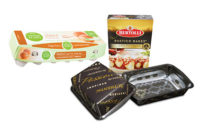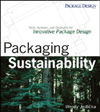If you were among the several hundred packaging professionals that attended the 2018 Global Pouch Forum last June 13-15 in Miami, then you know that one of the big show themes had to do with flexible packaging sustainability and recyclability. Several presenters discussed developments aimed at tackling plastic waste and several more offered up additional solutions. Of course, presenters were also quick to point out the existing sustainability benefits of flexible packaging, such as fighting food waste and the front-end supply chain benefits involved with the packaging format. (If you missed the Forum or just want to revisit a few of these presentations, visit the “Broadcast Live” page over at www.globalpouchforum.com.)
This story is a nice complement to the main theme of flexible packaging sustainability to come out of this year’s Global Pouch Forum. Read on to see some of the latest innovations and products that several companies and converters have released pertaining to flexible packaging sustainability.
Emsur Compostable Bags
Emsur France SPO has developed a bio-based and fully compostable single-use plastic bag. This new product is an addition to the existing product portfolio that the company is creating according to the strategic recommendations of the European Commission related to the circular economy. The material used for the single-use bag is 40 percent bioplastic. The percentage of bio-based material required in France will increase up to 50 percent in 2020 and 60 percent in 2025.
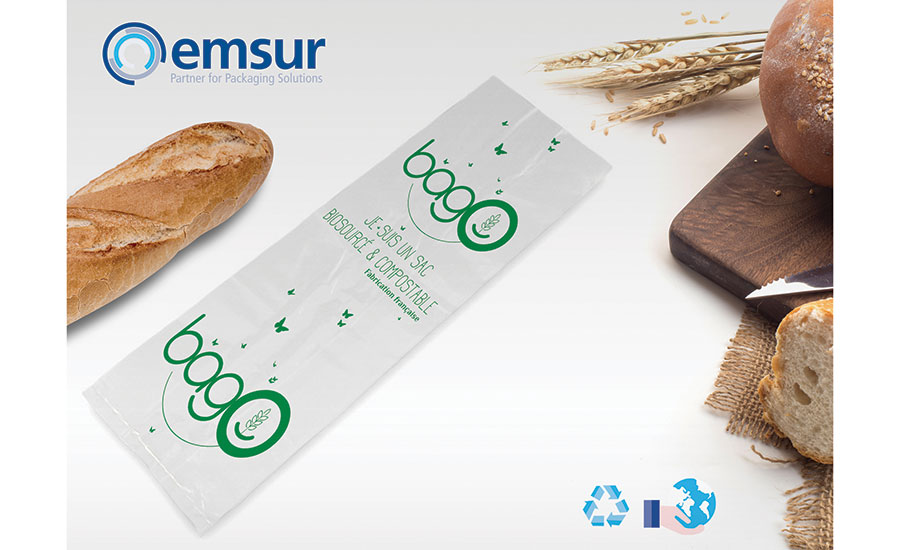
These bio-based plastics, or bioplastics, are plant-based materials used to replace the traditional plastics derived from petroleum. They are composed of polymers from renewable resources, partially or totally, such as corn, cellulose, plant oils, animal fats and oils, among others.
Bemis’ Encore Recyclable Film
Bemis Company, Inc. has launched Encore ultra-clear recyclable film, a technology that combines readily recyclable material with shelf-appealing transparency, designed to help CPGs attract today’s consumers while achieving the sustainability goals of their businesses.
“CPGs can feel confident with Encore ultra-clear recyclable film — it can provide the clarity and transparency shoppers demand, and still run on most standard existing manufacturing equipment,” explains John Wilson, market manager.
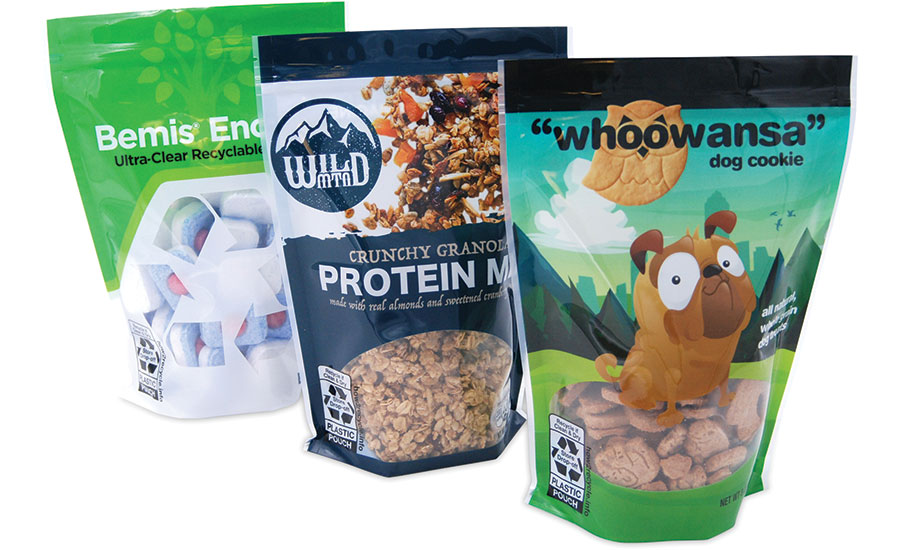
Compared to prior offerings, this new Bemis technology provides the advantages of a standard standup pouch, with the added benefit of improved recyclability. It can also incorporate convenience features, such as press-to-close zippers.
Encore ultra-clear recyclable film is made of polyethylene, and is designed to be recycled through existing How2Recycle store drop-offs. This technology offers benefits of low haze, good stiffness and high gloss. The film is currently available across multiple markets, including dish detergent pods, pet food and treats, confection items and more.
BioLogiQ’s New Biopolymers
BioLogiQ has recently launched three new grades of its plant-based NuPlastiQ biopolymer resin family. These new grades include NuPlastiQ XP High Performance BioPolymers for packaging applications; NuPlastiQ XD High Durability BioPolymers for durable goods applications; and NuPlastiQ BC Biodegradable/Compostable BioPolymers for foodservice and other packaging applications.
Using a proprietary process, BioLogiQ produces NuPlastiQ GP BioPolymers (GP) from natural, renewable resources — plants. GP resins contain 100% USDA Certified Biobased Content, and are ASTM D6400 and EN 13432 certified for compostability. When combined with traditional plastics to produce the new XP, XD, and BC grades, the resulting resins are stronger and more durable; reduce fossil fuel-based plastic usage and greenhouse gas generation; and maintain the recyclability, compostability, or biodegradability of that traditional polymer.
“We make polymers from plants by turning polysaccharides, or plant starch, into plastic,” says Brad LaPray, president of BioLogiQ. “This polymer actually forms an alloy with its partner polymers to produce new compounds that are stronger than the partner plastic would be by itself. It’s like combining copper and zinc to make brass, an alloy that’s more durable than either of its ingredients are by themselves.”
Henkel Ups the Ante on Recycled Materials
In 2017, Henkel says that more than 1.2 billion products it had a hand in making contained recycled material, an initiative that the company will continue to build on moving forward.
“We follow three principles for sustainable packaging,” says Prof. Dr. Thomas Müller-Kirschbaum, head of global research and development in Henkel’s Laundry & Home Care business unit. “First, we want to reduce the amount of packaging we use. Second, we’re adapting our packaging to contain more recycled material and make it easier to recycle. This will build momentum toward the ‘circular economy’ — where materials are gathered after use and can be reintegrated into new production processes over and over again.”
Last March, Henkel announced a new partnership with Waste Free Oceans to remove plastic waste from oceans and rivers. This collaboration builds on Henkel’s existing activities related to sustainable packaging and recycling, such as its partnership with the social enterprise Plastic Bank, which aims to stop ocean plastic and provide opportunities for people in poverty.
Product packaging fulfills important functions such as ensuring hygiene and providing space for information about safe and sustainable product use. However, one challenge is that recycled plastic is not available in sufficient quantity and quality. It can, for example, carry undesirable odors that affect the product. Henkel’s experts are engaged in several cross-industry initiatives to drive progress toward solutions for these challenges. One example is the New Plastics Economy, a three-year initiative led by the Ellen MacArthur Foundation that brings key stakeholders together to redesign the future of plastics. Henkel is also participating in CEFLEX, a consortium of around 50 European companies and organizations aiming to make flexible packaging easier to recycle.
“Progress toward sustainability in packaging will only be possible if organizations from all stages in the packaging value chain work together,” says Müller-Kirschbaum. “By sharing our knowledge, we can develop innovative technologies and identify improvements to infrastructure that make packaging easier to recycle around the world.”
Sugarcane Plastic Mailing Bags
Duo UK has produced GreenPE mailing bags, which are comprised of thermoplastic sustainable resins made from sugarcane. What’s unique about GreenPE is that its environmental credentials extend all the way down the production chain. For instance, sugarcane is a water-efficient crop that also captures carbon dioxide during photosynthesis.
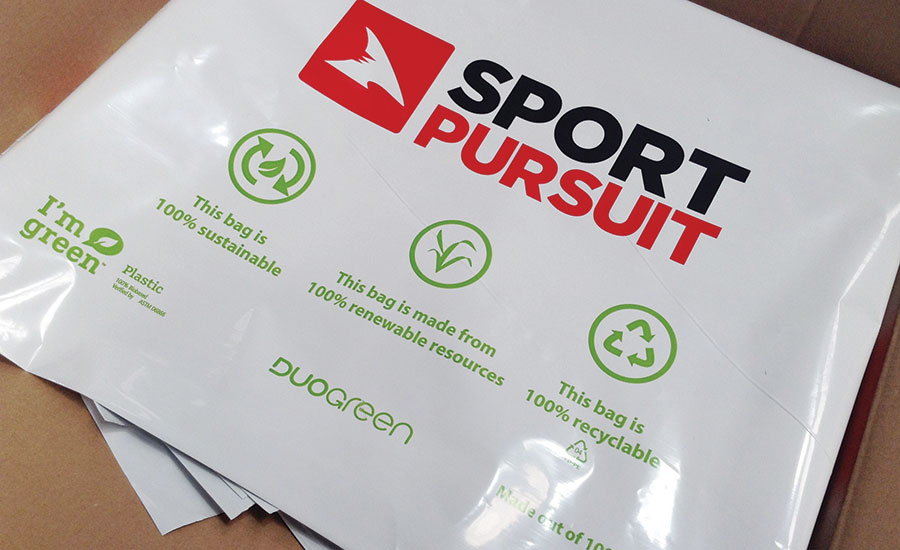
It is planted and grown in accordance to strict ethical guidelines. Further CO2 is sequestered from the atmosphere by the ethanol used to make GreenPE. Duo UK says each kilogram of green plastic produced saves 2.78kg of CO2, when compared to the production of conventional oil-based polythene. SportPursuit, a London-based e-commerce company, began using the GreenPE mailing bags in April.
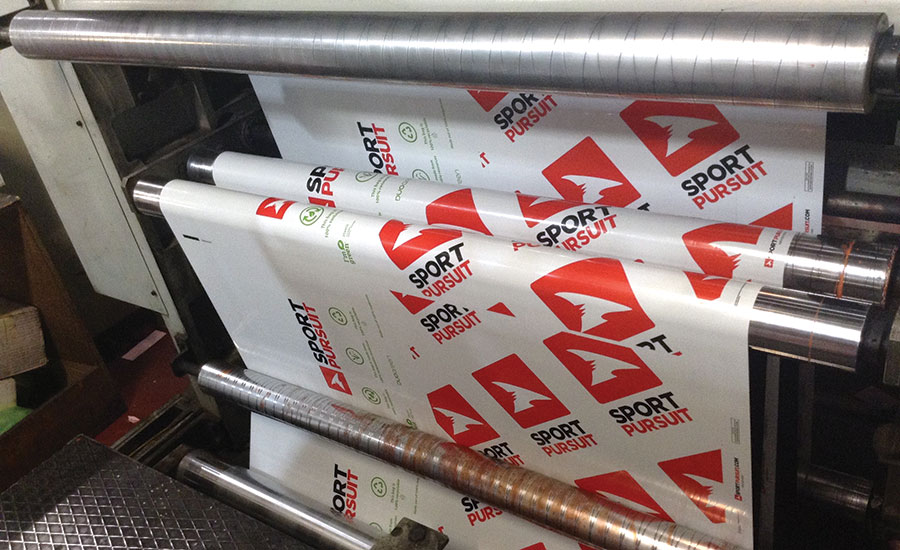
|
Is it Effective to Communicate Sustainability Initiatives on the Package? Study Sheds New LightCompanies understand the need of fit, form and function when it comes to their consumers and protecting their product. Flexible packaging has made amazing strides by telling the story of how energy, water and transportation factors are positive indicators of sustainability for packaging. And when applied to food waste and shelf life, the flexible proposition becomes even more compelling. The issue is that most of these topics are very industry specific and become hard to educate consumers on. Do consumers really understand the carbon footprint of the packaging they buy? And is there a difference between consumers’ interest in buying sustainable products and what they actually choose to purchase? When faced with these questions, QuadPackaging teamed with Package InSight, a Clemson University partner, to examine whether or not shoppers’ purchase decisions are influenced by a visual sustainability rating system placed on the front of packaging. We tested the idea using CuShop, a fully immersive retail consumer-experience laboratory located on Clemson’s campus.
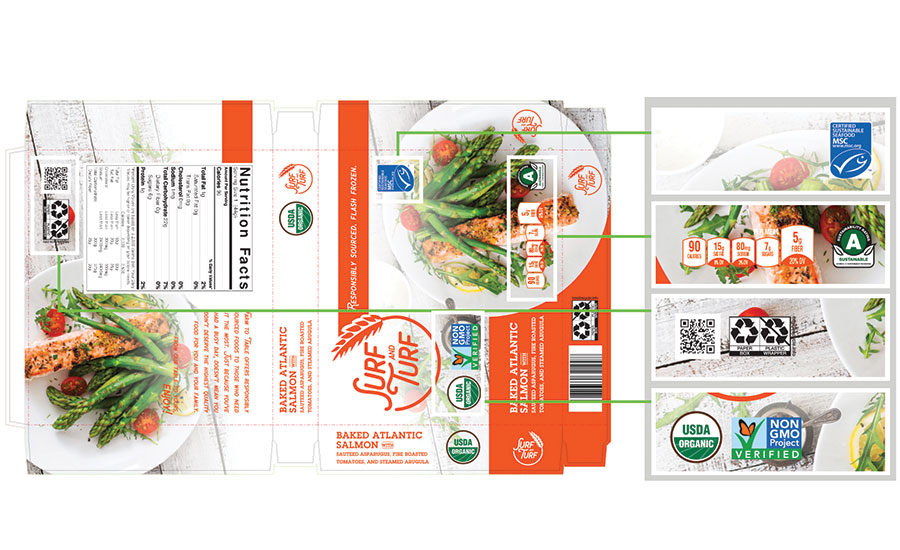
As part of the study, we created a logo with an accompanying grade and applied it to various packages in multiple product categories found in the grocery store, including snack, frozen foods, dry pasta, beverage and health. A unique logo was used, one that was intended to replicate an inspection or grading scale (e.g. local public health department’s A-B-C grading of restaurants) and the validation of that grade by a larger objective entity (e.g. Brewers Association Independent Craft Brewer Seal). We then had 60 participants (without any knowledge of what they were looking for) put on eye-tracking glasses to follow just where their eyes were looking when making purchase decisions. While in the store, eye tracking data was gathered, continuously recording and pinpointing the participant’s visual and nonconscious attention at 50 times per second, which generated over 800,000 data points. Once testing was completed, data was aggregated and compared across participant groups, where true insights and information about what initially attracted and then held the consumer’s attention could be calculated and reported. The results? An overwhelming 92 percent of the 60 study participants did not notice sustainability logos on the packages, despite 53 percent of participants saying that a simple rating system would impact their purchase. More than 40 percent claimed sustainability influences their buying decisions. Looking deeper, we examined the actual logo on the primary display to see if consumers noticed and eventually paid attention to it on the pack. Out of 60 shoppers, only one participant noticed the logo on the beverage, snack and pasta products, five participants noticed the badge on the health product and zero participants noticed it on the frozen meal package. Based on this study we found that, on average, consumers spend 2-3 seconds finding a product of interest within the competitive array, but noticing this logo on the package took 25 percent longer. Based on our analysis, we conclude that randomly added sustainability logos do not make an impact on consumer purchase decisions. While it might be important for brands to include sustainability messaging at some level, these findings demonstrate that there’s no need to use prime packaging real estate for that purpose. Instead, we believe that it is very important to educate consumers on the brand’s commitment to sustainability through follow-through on package design as well as an integrated marketing campaign that includes video, social media, landing pages and in-store POP’s. Consumers need to understand what they are looking for and why they should be looking for it in order for products to stand out and sustainability messaging on packaging to work. This will help to ensure a more successful message to your consumers and help diminish the anonymity of carbon footprint within packaging. FP - Paul Nowak, QuadPackaging senior director of sales strategy and business development |


